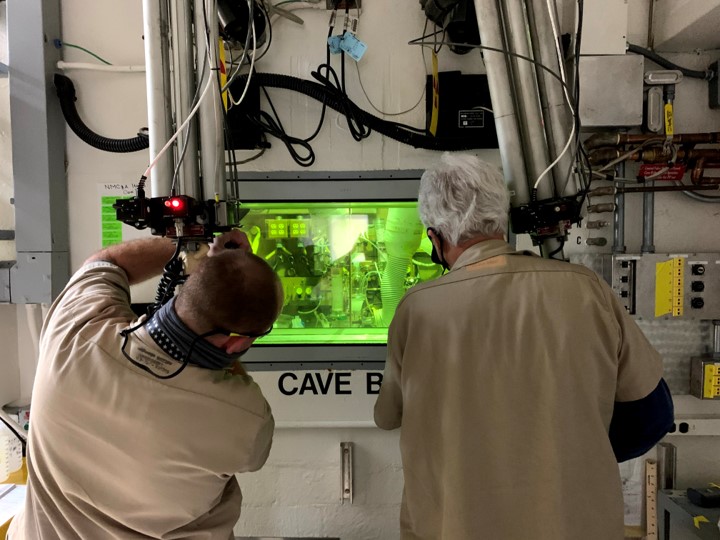ORNL mines Pm-147 from plutonium by-products

Technicians use a manipulator arm in a shielded cave in ORNL’s Radiochemical Engineering Development Center to separate concentrated Pm-147 from by-products generated through the production of Pu-238. Photo: Richard Mayes/ORNL, DOE
A method developed at Oak Ridge National Laboratory is allowing the Department of Energy to cull promethium-147 from plutonium-238 produced for space exploration. Under an ORNL project for the DOE Isotope Program that began last year, the lab has been mining Pm-147, a rare isotope used in nuclear batteries and to measure the thickness of materials, from the fission products left when Pu-238 is separated out of neptunium-237 targets. The Np-237 targets are irradiated in Oak Ridge’s High Flux Isotope Reactor, a DOE Office of Science user facility, to produce the Pu-238.
According to the DOE, the primary goal of the project is to reestablish the domestic production of Pm-147, which is in short supply. As a side benefit, the project is reducing the concentrations of radioactive elements in the waste so that it can be disposed of safely in simpler, less expensive ways, both now and in the future.
“In the process of recovering a valuable product that the DOE Isotope Program wants, we realized we can reduce our disposal costs,” said Richard Mayes, group leader for ORNL’s Emerging Isotope Research. “There’s some synergy.”








